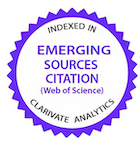Comportamento reprodutivo de Dendrocephalus brasiliensis, Pesta 1921 (crustacea: anostraca)
DOI:
https://doi.org/10.5216/cab.v12i4.1044Palavras-chave:
CarcinoculturaResumo
O comportamento reprodutivo de anostráceos de água doce tem sido pouco divulgado na literatura especializada em carcinologia, especificamente em relação ao Dendrocephlaus brasiliensis Pesta, 1921, havendo apenas dados abundantes sobre a distribuição geográfica desse anostráceo dulciaquícola. O objetivo deste trabalho foi conhecer o comportamento reprodutivo desse Anostraca, em diferentes períodos (seco e chuvoso). Para isto, foram utilizados indivíduos maduros de ambos os sexos coletados em quatro viveiros da Estação de Piscicultura de Paulo Afonso (EPPA), por meio de captura mensal em cada viveiro, durante o período de dezembro de 2004 a novembro de 2005. O tipo de reprodução foi observado através da colocação em aquários, de algumas fêmeas juntas com machos e outras individualmente, a partir da fase de náuplios, onde permaneceram por 15 dias (idade reprodutiva). A proporção sexual dos indivíduos foi calculada através das frequências relativas de machos e de fêmeas, a cada mês, para todo o período de coleta. Aos 10 dias é possível produção de cistos e o número desses está relacionado ao tamanho da fêmea. A relação macho:fêmea no período de estudo foi de 1 macho para 1,07 fêmea. A proporção macho:fêmeas foi de 51,75% de fêmea para 48,25% de machos ao longo do ano. Foi observado, por meio do comportamento reprodutivo, tratar-se de reprodução sexuada.
PALAVRAS-CHAVE: água doce; crustáceo; reprodução; Thamnocephalidae.
Downloads
Publicado
Como Citar
Edição
Seção
Licença
Copyright (c) 2011 Ciência Animal Brasileira / Brazilian Animal Science

Este trabalho está licenciado sob uma licença Creative Commons Attribution 4.0 International License.
Autores que publicam nesta revista concordam com os seguintes termos:
- Autores mantém os direitos autorais e concedem à revista o direito de primeira publicação, com o trabalho simultaneamente licenciado sob a Licença Creative Commons Attribution que permite o compartilhamento do trabalho com reconhecimento da autoria e publicação inicial nesta revista.
- Autores têm autorização para assumir contratos adicionais separadamente, para distribuição não-exclusiva da versão do trabalho publicada nesta revista (ex.: publicar em repositório institucional ou como capítulo de livro), com reconhecimento de autoria e publicação inicial nesta revista.
- Autores têm permissão e são estimulados a publicar e distribuir seu trabalho online (ex.: em repositórios institucionais ou na sua página pessoal) a qualquer ponto antes ou durante o processo editorial, já que isso pode gerar alterações produtivas, bem como aumentar o impacto e a citação do trabalho publicado (Veja O Efeito do Acesso Livre).






























